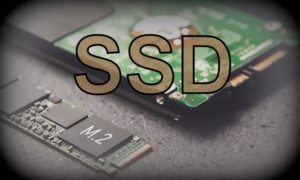Here in this article, we will discuss about the HDD specifications & all the features in details.
This article explains key features of
- HDD-Cache,
- Rotation Speed RPM,
- Data Transfer Rates,
- Latency,
- Seek times, &
- Error Correction Codes are important hard disk drive specifications.
BUFFER/CACHE SIZE
Disk drives are slow. Your computer uses RAM memory that responds to requests in tens of nanoseconds, but the disk drive responds to requests in tens of milliseconds. That’s six orders of magnitude difference in speed.
Whenever you’re moving data between a faster medium and a slower one, adding a cache to hold recently used or anticipated data can improve performance by reducing the amount of data that needs to travel through the bottleneck area. A hard disk’s performance can similarly be improved by caching. Many HDD manufacturers refers cache as a buffer in their drive specifications.
A disk cache seeks to use the speed of memory to boost the effective speed of the disk. The cache is held in memory chips and is usually one to a few megabytes in size. The operating system can access data previously placed in the disk cache as it needed. Using this disk cache, it lower down the number of physical seeks and transfers from the hard disk itself.
Smart caching algorithms generally mean that there’s no need to change the size of the disk cache. This cache buffer acts as a holding area for one or more tracks, or even a complete cylinder’s worth of information in case you need it. This cache buffer can be effective in speeding up both throughput and access times.
ROTATIONAL SPEED – RPM
Once a head positions itself over a track, the job’s still not done. Now the head has to wait for the correct sector to rotate to a position beneath it. How long this takes is a matter of luck. If you’re lucky, the sector is already there; if you’re really unlucky, you just missed it and will have to wait an entire revolution for it to come round again. As mentioned above, this waiting time, whether large or small, is the rotational latency period.
A common number is referred as average latency period. This makes the simple assumption that, on average, the disk must make a half-revolution to get to your sector. Manufacturers calculates the latency period from HDD spindle speed. Latency, like seek time, is normally expressed in milliseconds.
Rotational latency is directly affected by rotational speed. Depending on the Model & RPM, disk drives rotate between 3,600 rpm and 15,000 rpm. For a disk rotating at the speed of 3,600 rpm, one-half revolution takes 1/7, 200 of a minute or 8.33ms. This contributes to the amount of time the system must wait for service (the rotational latency).
The higher the spindle’s speed (the rpm), the lower the average latency. Calculate the average latency based on a half rotation of the disk; calculate the worst-case latency on a full rotation of the disk.
DATA TRANSFER RATE
Data Transfer Rate is how fast a disk can transfer data once it has been found it. Specifically, the transfer rate is a measure of the amount of data that the system can access over a period of time (typically one second). It’s determined by the external data transfer rate and the internal transfer rate.
The external data transfer rate is the speed of communication between the system memory and the internal cache or buffer built into the drive.
The internal data transfer rate is the speed at which the hard disk can physically read or write data to or from the surface of the platter & then transfer it to the internal drive cache or read buffer of HDD.
Transfer rates vary depending on the density of the data on the disk, how fast the disk is spinning and the location of the data matters also.
SEEKS AND LATENCY
How fast the disk can find and read a sector is determined in part by access time. Reading a particular sector consists of two steps for HDD. First, the head must be moved to the correct track on the platter. Once the head is over that track, you must wait for the sector to spin under the head and read the desired sector.
The time required for the head to position itself over a track is defined as Seek time. The latency period is how long it takes the desired or required sector to move under the head.
Moving the head takes a lot longer than waiting for the sector to come around as it finds the sector location. Low seek times (the time to move the head) are critical but provides good disk performance.
Access time (time to find a sector) equals to seek time (time to move to the sector’s cylinder) plus rotational latency period (time to wait for the sector to rotate around and appear under the heads).
Access Time = Seek Time + Latency Period
TYPICAL SEEK TIMES
Of the seek time and the latency period, the seek time is usually the longer wait. Seek time is usually expressed in milliseconds (ms). It varies according to how many tracks the heads must traverse. A seek from one track to the next track is usually quick – just a few milliseconds – but most seeks aren’t so convenient.
Remember, the lower the seek time, the better. Note that in current computing environments, a millisecond is a long period, considering that the measure for modern system memory is nanoseconds. This means the system may have to wait for the hard disk.
A common measure of an average seek is the time the system requires to travel one-third of the way across the disk. Most benchmark programs use this measurement. You might wonder, “Why not halfway across the disk, rather than one-third?” The reason is that most accesses are short seeks of just a few tracks.
In the earlier, Vendors & Manufacturers have sold hard disks with seek times of almost 100ms. Nowadays, the average seek time of a new drive is almost inbetween 5ms and 10ms. In general, the low speed depends on what you’re willing to spend on a drive, as seek times are built into a drive. There’s no way for you to improve a drive’s seek time short of getting a new drive.
ERROR CORRECTION CODE (ECC)
None of the electronic data transmission or storage systems are perfect. Each system makes errors at a certain rate. Modern disks have built-in Error Detection & Correction Algorithms or Mechanisms.
Disk systems are great as storage media, but they’re volatile. From the first second after you placed a piece of data on a disk, it starts to ‘evaporate.’ The magnetic domains on the disk that define the data slowly randomize until the data is unrecognizable. The disk itself and the media may be fine, but the data image can fade on hdd after some years.
ECC why its required?
Disk sub-systems are aware of this and include some method of detecting and correcting minor data loss of HDD. Because the disk sub-system can detect but cannot correct major data loss. The controller includes extra data, which is known as the Error Correction Code(ECC). When controller writes information to the disk it stores redundant information on disk. When the controller reads back this information, it can detect whether errors have occurred or not in the data. The controller stores redundant information with the disk data at the time of writing it on the disk. And the disk controller checks the redundant information to verify data integrity when it reads data from it.
ECC calculations are more complex than a simple checksum. The ECC that most manufacturers implements in hard disks ( & CD-ROMs) uses the well known Reed-Solomon algorithm. The calculations take time, so there’s a tradeoff; more complex ECCs can recover more damaged data, but they take more computation time. The number of bits associated with a sector for ECC is a design decision, and it determines the robustness of the error detection and correction. Quite a number of modern disks use more than 200 bits of code for each sector while writing the data for data integrity.
Some controllers let you use an x-bit Error Correction Code. In this example, x refers to the number of consecutive bad bits that ECC can correct easily. The original ATA hard disk controller, for instance, it can correct up to five bad consecutive bits. That means it had a Maximum Correctable Error burst length for 5 bits only. Newer controllers can usually correct upto 11 bits & Some new technology advancement of controller uses special high-speed controller hardware to do 70-bit Error Correction.




